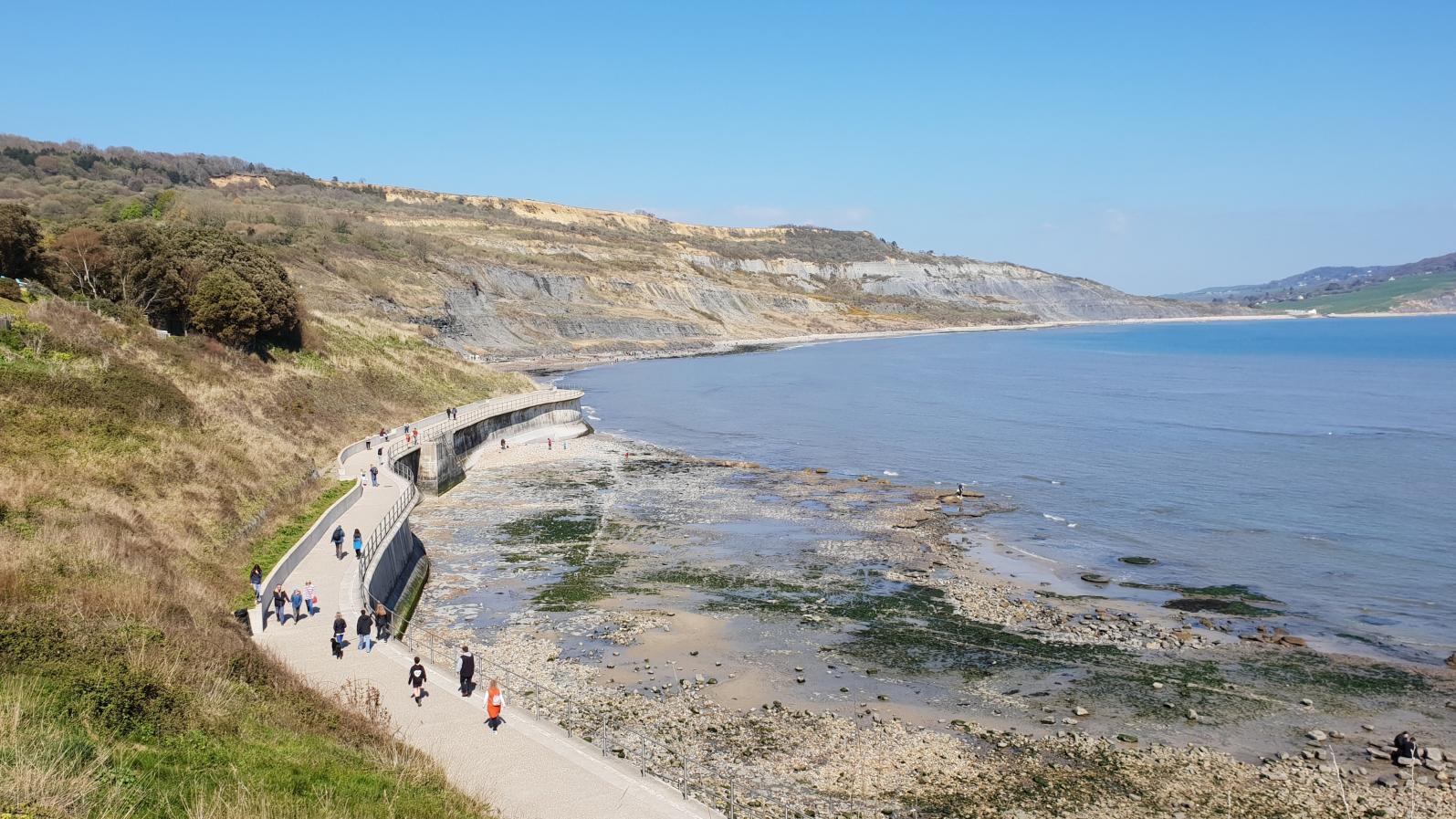Church Cliff Walk

Church Cliff Walk opened in June 2015 following completion of Phase 4 of the Lyme Regis Environmental Improvements Scheme. Lyme faces huge challenges from coastal erosion and consequent landslips with the ongoing coastal protection project, the first stage of which started in the 1990s, designed to protect the town from the ravages of the sea for 50 years.
Construction began in April 2013 to build a 1,200ft (390m) stretch of sea wall and stabilise slopes at Church Cliff and East Cliff. A remarkable feat of engineering and innovation involving 2,500 soil nails, a 27m deep anchored piled wall with anchors up to 46m long, dowel piles extending to 12m, groundwater drainage, 6,800 cubic metres of concrete and 390 tonnes of rock armour.
The Environment Agency said the £19.5m project was one of the "largest and most complex" coastal protection schemes attempted in England for years.
The new seawall, named Church Cliff Walk provides much improved access to the fossil beach at East Cliff, while creating a direct link to the seafront from Charmouth Road car park via a path and 114 steps.
A large ammonite discovered by Lyme Regis Museum geologist Paddy Howe during construction can be found at the end of the walkway, set into the wall.